POC fungi Community Virtual Gathering 2021
This year we have been honoring the fungal relative Huitlacoche Ustilago maydis. This beautiful and delicious ancestral food that only grows on Teocintli grasses, evolved alongside Maize, and created one of the closest fungal relationships Indigenous people had. The Huitlacoche fungus is special in the way it transforms Maize on a cellular level by infecting the plant sucrose cells and converts them into a black hyphal matrix that eventually convert into teliospores capable of flying long distances to continue another field of Maize and begin the process again. In our view of Huitlacoche we see the embodied elements inherit in the fungus. These elements invoke feelings of in betweenness and binary dissolving power by sharing their magic with us. The magic it takes to convert a sun loving plant (Maize/Teocintli) that absorbs light energy to convert into complex sugars to then be converted again by the fungal cells, that often overwinter in the soil and lay dormant in the dark moist Earth and within the plant cell walls, before the fungus finds the sucrose pathways when the corn Cobb is formed and begins the process of transforming this sacred food into a whole other being. Huitlacoche. This fungus longs for Indigenous people everywhere who traditionally farmed and traded corn to remember their relationship with it and reclaim it as their own. Indigenous people everywhere have different names for this dark and delicious fungus but what we reject is the re-branding of this corn by the gourmet industry to name it something more “palatable” and easier to pronounce by calling it Corn Caviar, Mexican Truffle, and Corn Truffle. The result of this re-branding exacerbates Indigenous erasure and marginalization and so its imperative that we continue to call it Huitlacoche by its name and revitalize/honor Indigenous languages in the process.
